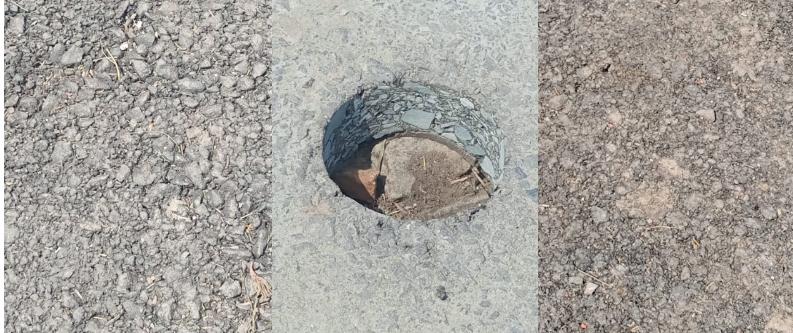BY: Maham Tariq and Duaa Asghar
While frequently connected with experiencing wartime trauma, post-traumatic disorder issue (PTSD) may happen following openness to any traumatic accident. PTSD can create in light of natural disasters, mishaps, losing dear one, or violent encounters. It’s realities demonstrate that most of adults insight at any rate one awful traumatic accident during their life, however, most don’t go to create PTSD.
Prevalence: In Pakistan, the average statistics show that in any case, the PTSD issue is more normal than numerous individuals estimate. Going through trauma is not rare in our social life. Around 6 of each 10 male and 5 of each 10 female experience at any rate one trauma in their lives. Women are bound to encounter rape and children sexual abuse. Men are bound to encounter mishaps, actual assault, war, natural disaster, or to observe injury.
According to (MHA), in April, 2021the overall prevalence of the post-traumatic disorder in the world is caused due to different facts.49 percent of rape victims will develop PTSD. Nearly 32 percent due to of COVID-19 develop PTSD. 16.8 percent of individuals who are involved in severe accidents, such as car or train accidents, develop PTSD. About 15.4 percent of shooting and stabbing victims develop PTSD and about 14.3 percent of people who unexpectedly experience the death of a close one relatives develop PTSD. Parents of children who are fighting for the life-threatening illnesses develop PTSD 10.4 percent at that time. Witnessing the murder or serious injury or another person causes 7.3 percent to suffer the people from PTSD. 3.8 percent of people who confront natural disasters develop PTSD.
The (COVID-19) pandemic is one of the worst pandemics classified in the 21st century. Its rapid transmission, unbearable death rate, and unpredictability surrounding its transmission way have remind other fear and anxiety. Healthcare assistants are not just exposed to the virus on daily basis, but may also be seeing increased number of cases and deaths. Also, sufferers with COVID-19 admitted to the hospital experience quarantine and fright for life. These exposures enhance the chance of developing PTSD. However, the best of our knowledge for information, no important study has survey PTSD prevalence three months after the start of the quarantine procedures in Pakistan nor has examined PTSD prevalence by three different methods. In the month of June 2020, about 1374 people (49.05% men and 50.95% women) have screen out the questionnaire pol. The specific prevalence of PTSD that about 59.8% people are normal and about 40.2% people are suffering from the PTSD disorder.
In September 2014, the Kashmir area suffered disastrous floods across a considerable lot of its district brought about by heavy rainfall. There were 500 participants in the study out of which 320 were males and 180 females that is 64% and 36% with age range from 15 to 60 above. Majority of the population which are effected was of Muslims (98%) with mother language Kashmiri (96%), 86% living in joint families and 20% were earning less than 6000 per month and 26% about earned from 10000-25000 per month. Most of them were farmers (56%) and illiterate (34%), the level of prevalence of post-traumatic stress disorder among flood victims. 302 (60%) were severely affected from post-traumatic stress disorder. 148 (30%) of the population were moderately affected by post-traumatic stress disorder and the remaining 50 (10%) of the flood victims were slightly affected.
The survey suggests that the level of depression among the flood-affected populations. 3449(68.8%) victims were more likely to be depressed whereas rests 156(31.2%) were at lower chance to be depressed.
Any condition that create anxiety can cause PTSD. It appears in about 1 in 3 people. Physicians are not confident why some develop PTSD. It is develop by certain factors like;
• Having depression and not getting support from loved ones.
• Intensity of stressful events.
• Hereditary mental health problems.
• Facing further issues after an event.
Symptoms: These signs begin within 3 months after a distressing event, but they can also start latter. The particular symptoms can alter between persons, but mostly are;
• Bad dreams
• Hallucinations about event reappearance
• Frightful notions
• Sleeping problems
• Fits of rage
• Feeling stressed
• Avoiding to talk about the event
• Escaping from conditions that remind of the event
• No love for life
• Feeling disconnected from others
There are some physical symptoms like shivering, migraine, and laziness, etc. For children under 6 year’s age, symptoms may include wetting the bed and failure to speak properly. Among the age of 5 and 12 years, they may not have flashes from the past but reveal the trauma by stories and pictures. Between 12 and 18 years ages, the individual show rude behavior and may think about revenge.
Treatment: People have to see a doctor after experiencing signs like depression, anxiety for making their condition under control. Treatment mainly includes counseling, psychotherapy or medication. One type of psychotherapy involves CPT (Cognitive Processing Therapy), in which a person knows how to imagine things in a new manner. Some medicines like Selective Serotonin Reuptake Inhibitors (SSRIs) are mostly used to treat this. But there have been some cases where antidepressant medicines enhanced the suicide risk in persons under 24 age. Study has proposed that testing therapies like cortisone hormone therapy and computer games etc. may help, but more verification is required to confirm their security.
Self-Help Tips: The key part of healing is active coping. In which person knows about PTSD and acknowledges that ongoing reaction is common and healing takes time. More things that can help involve;
• Performing some physical exercise like yoga or walking.
• Doing breathing or meditation processes.
• Spending time in nature and hearing music.
• Agreeing that PTSD is not a symptom of weakness but can be to anyone.
• Taking part in entertaining activities that can give diversion.
Prevention: Many people have PTSD signs at first after going through a traumatic incident. But, most don’t have long-term PTSD. Few precautions are;
• Receiving help at times may stop normal stress responses from being severe and evolving into PTSD.
• Connecting with family and friends who will listen and give relief.
• Consulting a mental health expert for a short trial of therapy.
• Assistance from others prevents someone from adopting unhealthy methods, like improper use of drugs or alcohol.
PTSD is a distressing state where the past always remains in people. But, it also gives a chance for mental and inner growth because of the human capacity to develop well in spite of suffering hard times.











